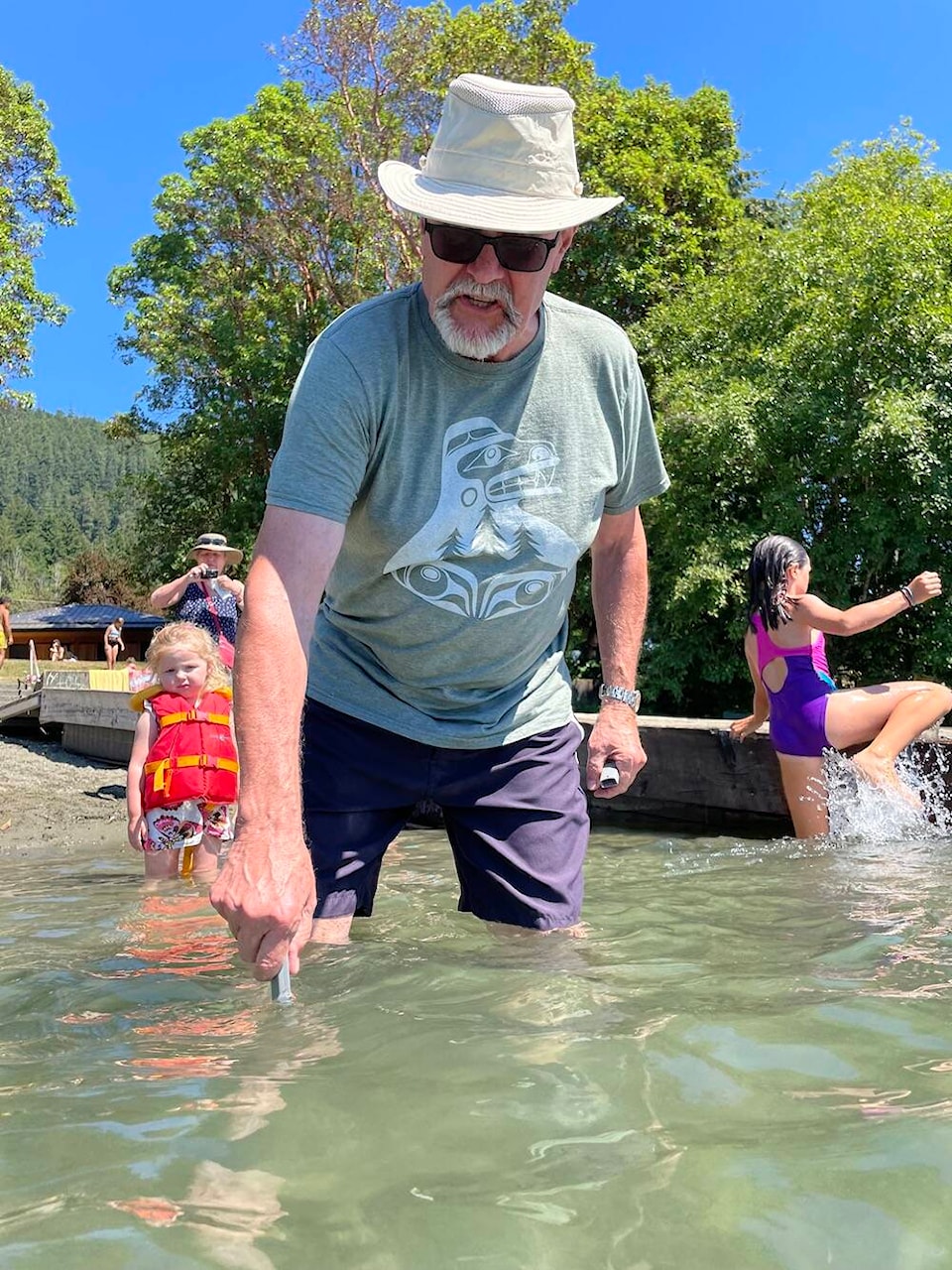Digital thermometer in hand, British Columbia Conservation Foundation volunteer Jim Deck zigzagged his way through the sandcastle-building children on the beach at Youbou’s Arbutus Park and waded thigh deep to test Cowichan Lake’s water temperature.
After swirling the thermometer around in the water for a time, Deck got a recording of 22.1 C.
“It’s warm, but that’s just the top six inches and it’s going to be warm with this hot sun and what not,” he said. “When you get down to where your feet are or out at the bottom of the lake over there,” he said gesturing toward the middle of the lake, “it’s probably down around 18 C. Last summer the water that was flowing out over the dike on a number of days got up to 22 C which is too hot for fish.”
Deck and his wife Karen Deck belong to a corps of volunteers that test the levels of sunscreen chemicals in the lake and the Cowichan River for British Columbia Conservation Foundation.
“We know that the bad sunscreens with that chemical [Oxybenzone] aren’t good for the lake and fish,” he said.
Not only are the Decks looking out for the lake and river, they live near the beach in Youbou so they’re simply taking care of their neighbourhood, too.
After testing the water temperature, Deck pulled out four brown test tubes to collect his water samples.
Testing for this year just began the weekend prior to the long weekend, he explained, presumably because that’s when the weather actually drew people out to the area’s waterways for recreation.
For his team’s part, they’ll be testing six sites around Cowichan Lake and then six spots along the Cowichan River as well.
For the lake, the Decks will be testing Arbutus Park and Spring Beach, while others will capture data at the Duck Pond, Gordon Bay, Honeymoon Bay, and the Tube Shack.
Once the information has been recorded and analyzed, the report will be made available on the British Columbia Conservation Foundation website, alongside last year’s data.
Long-time Laker, former mayor Ross Forrest knows first hand where all that sunscreen is coming from.
“I can tell you with absolute certainty that the tourists who come and tube our river absolutely are in awe of its beauty and cleanliness,” Forrest said. “We who live here are so fortunate to be able to share what we take for granted with others.”
He said while driving a shuttle bus for the Tube Shack this summer, “I’ve been amazed by our customers, where they’re from, and most importantly the feedback they provide as to their experience tubing and our community in general. I fish for information and they are always open to oblige.”
Forrest began tracking the places people have travelled to the lake from on the day the Tube Shack opened and thus far — and admittedly not a comprehensive list as he’s just one of a number of shuttle drivers — he has recorded visitors from: the Netherlands, Germany, Ireland, Mexico, Poland, Ukraine, Romania, South Africa, Denmark, Scotland, Brazil, Philippines, Australia, the U.S. (Chicago, California, Kodiak Island Alaska), Grand Cayman, England, Korea, New Zealand, Bahamas, India, China, Switzerland, Spain, Iran as well as Canadians from Vancouver, Edmonton, Toronto, Regina, Saskatoon, Montreal, Quebec City, Halifax, Newmarket Ontario, and Labrador.
“People travel from all over Vancouver Island to enjoy the tubing experience as well and the one thing that stands out to me and is consistent from all conversations is how much they appreciate the beautiful area where we live,” he said. “The non-stop compliments about our pristine river definitely reinforces how fortunate myself and many of you have been to have access to this worldly popular river. It is second to none so please respect and take care of it.”
